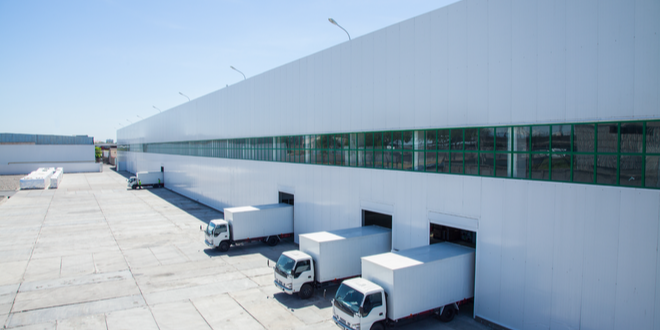Higher interest rates are affecting the economy, including the local industrial market, according to several local brokers. Neither is predicting a disaster, just a slower-than-normal year. Despite rising interest rates and threats of a recession, the Inland Empire industrial market performed extremely well in 2022.
During the third quarter, industrial vacancy in Riverside and San Bernardino counties was 0.5 percent, a near-record low for the region, according to CBRE.
In the “big-box” category – 500,000 square feet and larger – vacancy was close to zero.
In another sign of a healthy market, total activity in the two-county region more than doubled between the second and third quarter of 2022, to 16 million square feet, mostly because of large lease deals.
Half of that 16 million square feet was in the big-box category, CBRE reported.
Also during the third quarter – the most recent data available – rents increased 60 percent year-over-year, to $1.46 cents a square foot. Nearly 38 million square feet of industrial space was under construction as the quarter ended, and a little more than 1.1 million square feet of space was absorbed in that time.
Even the bad news wasn’t so bad.
The Inland Empire’s 4.2 percent unemployment rate was 0.8 percent higher than it was in the second quarter, a significant increase but one that can be attributed to the Federal Reserve’s strategy to reduce inflation by raising interest rates and encouraging layoffs nationwide.
In its conclusion, the report was somewhat optimistic about the Inland industrial market during the next 12 months, declaring that its closeness to large population centers, and its access to the Los Angeles and Long Beach ports, guarantees that it will remain a major player in U.S. logistics.
So will the Inland industrial market, which has driven much of the Inland region’s economic growth during the past 20 years, continue to put up unheard of numbers – like half-percent vacancy – in 2023?
Not necessarily, according to CBRE.
Its third-quarter analysis is also pessimistic in several ways. It notes that the four interest rate hikes this year, and a fifth expected this month, raise the possibility of a “serious recession” and “prolonged economic hardship” in 2023.
“Companies and individuals alike are moving forward with understandable caution,” the report concludes. “Many are waiting to see what moves the Federal Reserve makes before committing to long-term obligations.”
One year ago, one of the Inland region’s leading industrial brokers was marveling over the demand for local industrial space, calling it the highest level of interest he’d seen in his 38-year career. He also predicted that trend wouldn’t go away anytime soon.
One year later, that broker’s optimism is a little more restrained.
“I expect the Inland Empire industrial market to do well in 2023, but I don’t think it will be quite as hot as it was in 2022, or before that,” said Chuck Belden, vice chairman with Cushman & Wakefield Ontario. “We aren’t entirely out of the pandemic, and some supply chain issues haven’t been resolved. There are still boats waiting to dock in Los Angeles and Long Beach, from what I’m hearing.”
Inflation nationwide was at 7.7 percent at the end of October, well above the two percent considered ideal for long-term economic growth, according to the U.S. Department of Labor.
Should that number reach double digits in 2023, the damage to the industrial market could be severe.
Sales would drop, followed by a drop in production and not enough warehouse-distribution space being leased.
“If you don’t have things to store, then you don’t need a warehouse,” Belden said. “A lot of investors are afraid of that right now.”
The increase in interest rates is already having an impact on the Inland Empire industrial market said Paul Earnhart, senior vice president with Lee & Associates Ontario.
“The higher interest rates have softened the whole economy, which has made it a lot more difficult to get a construction loan because the banks aren’t lending,” said Earnhart, who has been negotiating industrial transactions in the Inland Empire for more 25 years. “That’s why there aren’t as many ‘spec’ projects being built now as there have been in the past. Construction costs are high, and financing is too tough to get.”
But Earnhart was not all doom and gloom. There will be more than enough build-to-suit projects to prop up the market, lease rates should be relatively stable and the High Desert should continue to attract more projects, particularly ones 500,000 square feet and larger because it has more available land.
“I think 2023 will be a good year, overall,” Earnhart said. “I’m glad I’m working here instead of some other market.”
Trying to guess how a market will be performing in a year is difficult in the best of circumstances, but it’s especially difficult to do with a volatile market, according to Belden.
“Predicting the next 12 months isn’t easy,” Belden said. “There are a lot of factors involved, and lot of nuances to the market. I expect it to stay that way for a couple of years.”
 IE Business Daily Business news for the Inland Empire.
IE Business Daily Business news for the Inland Empire.


